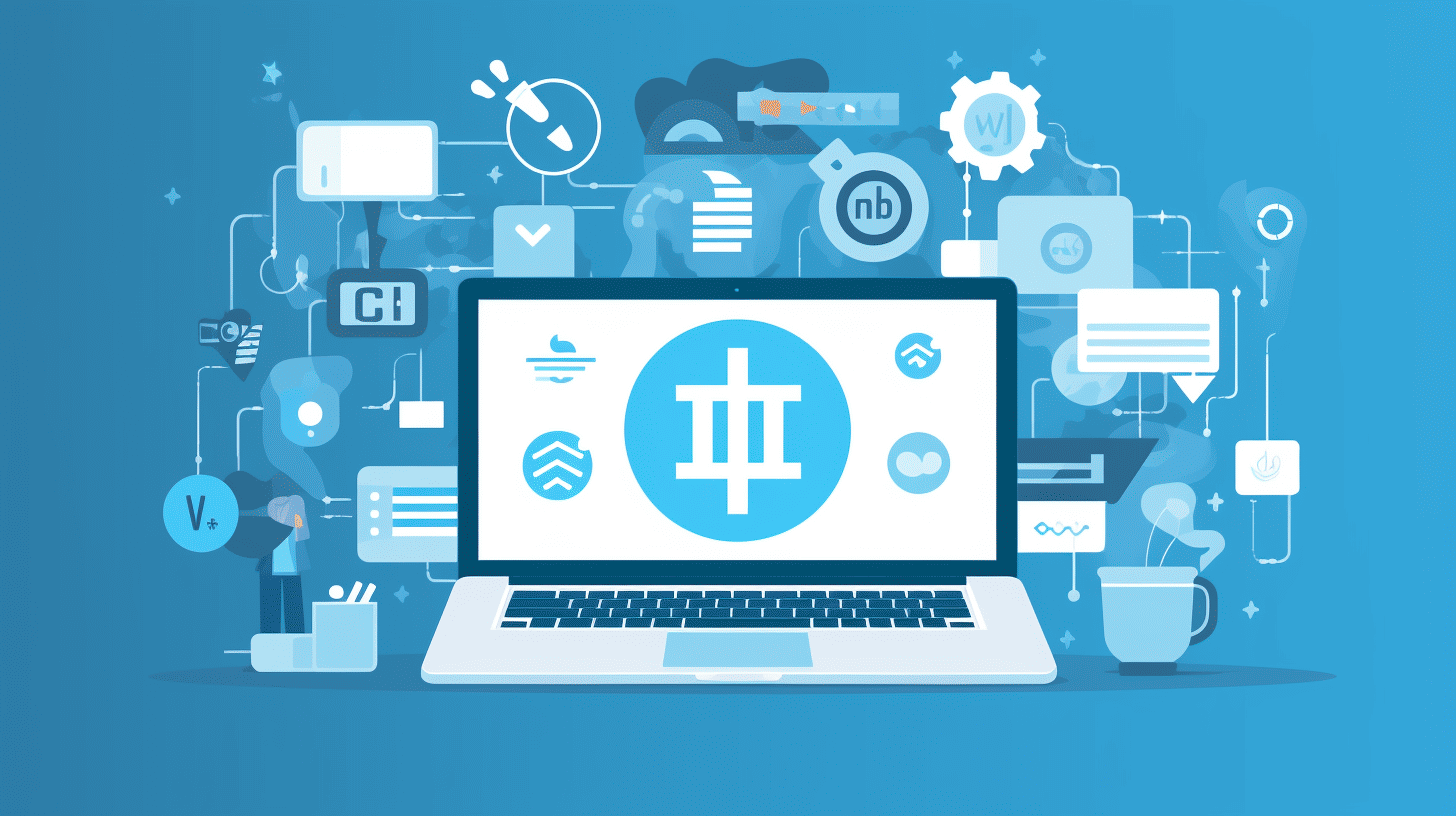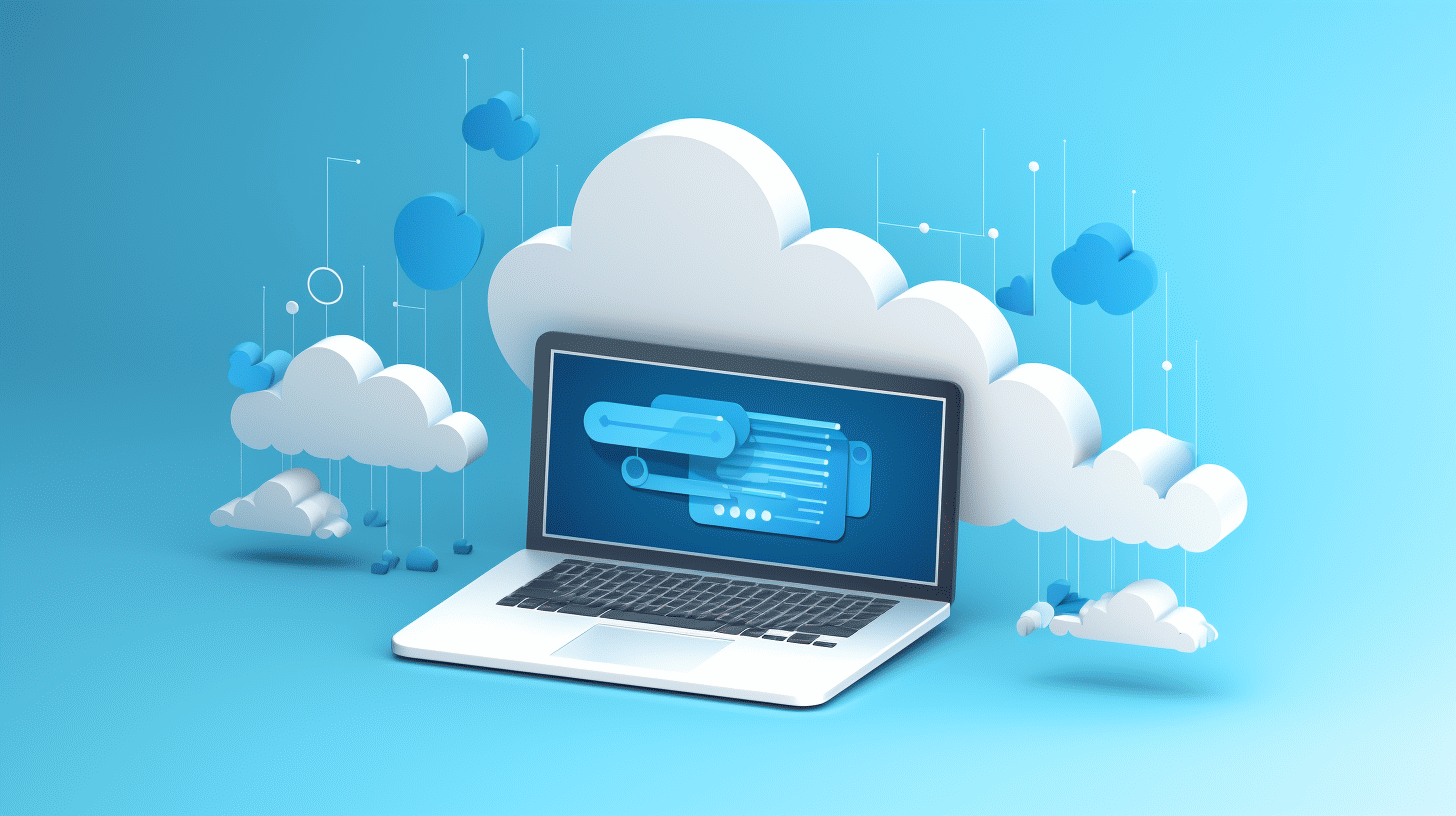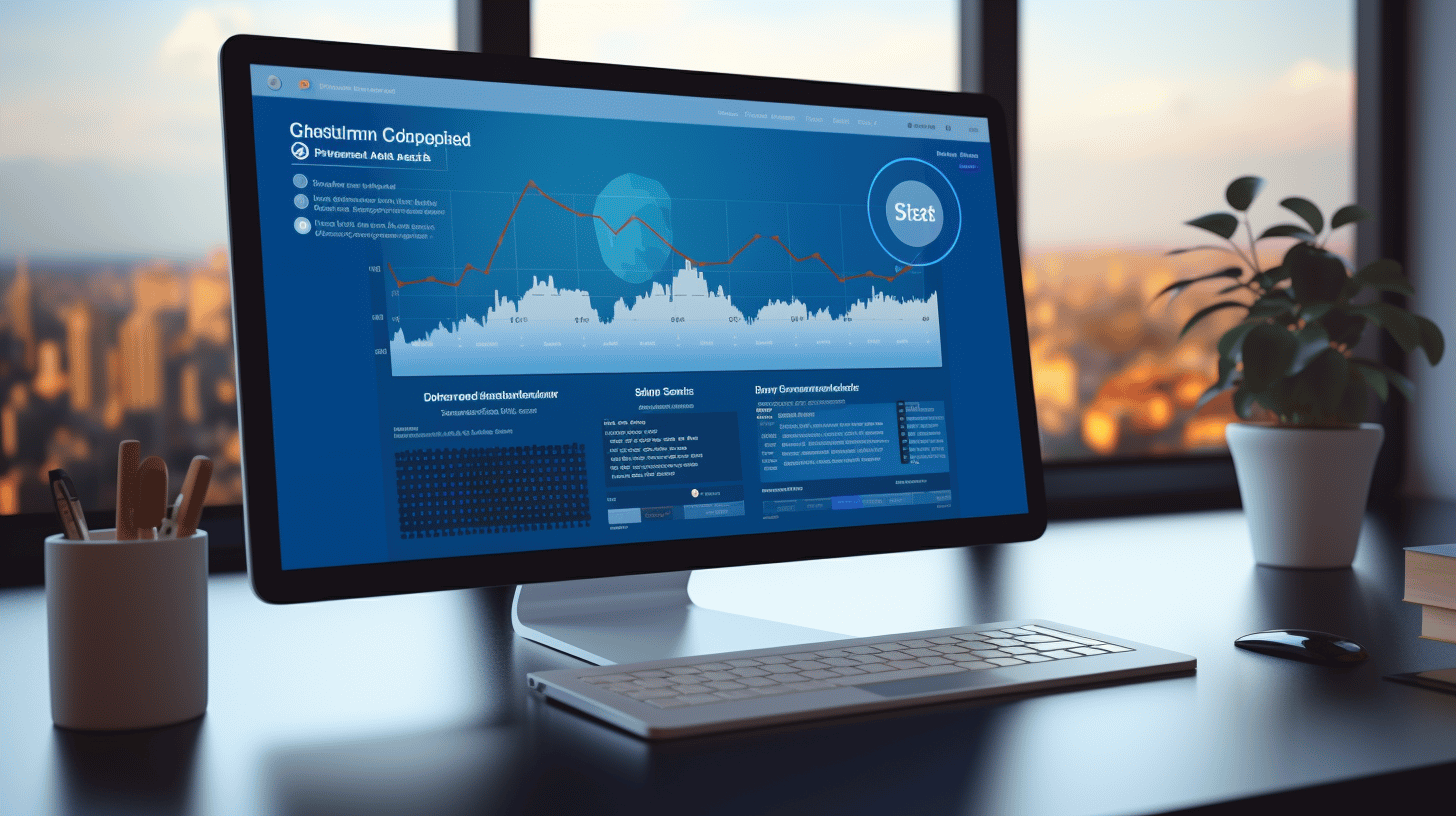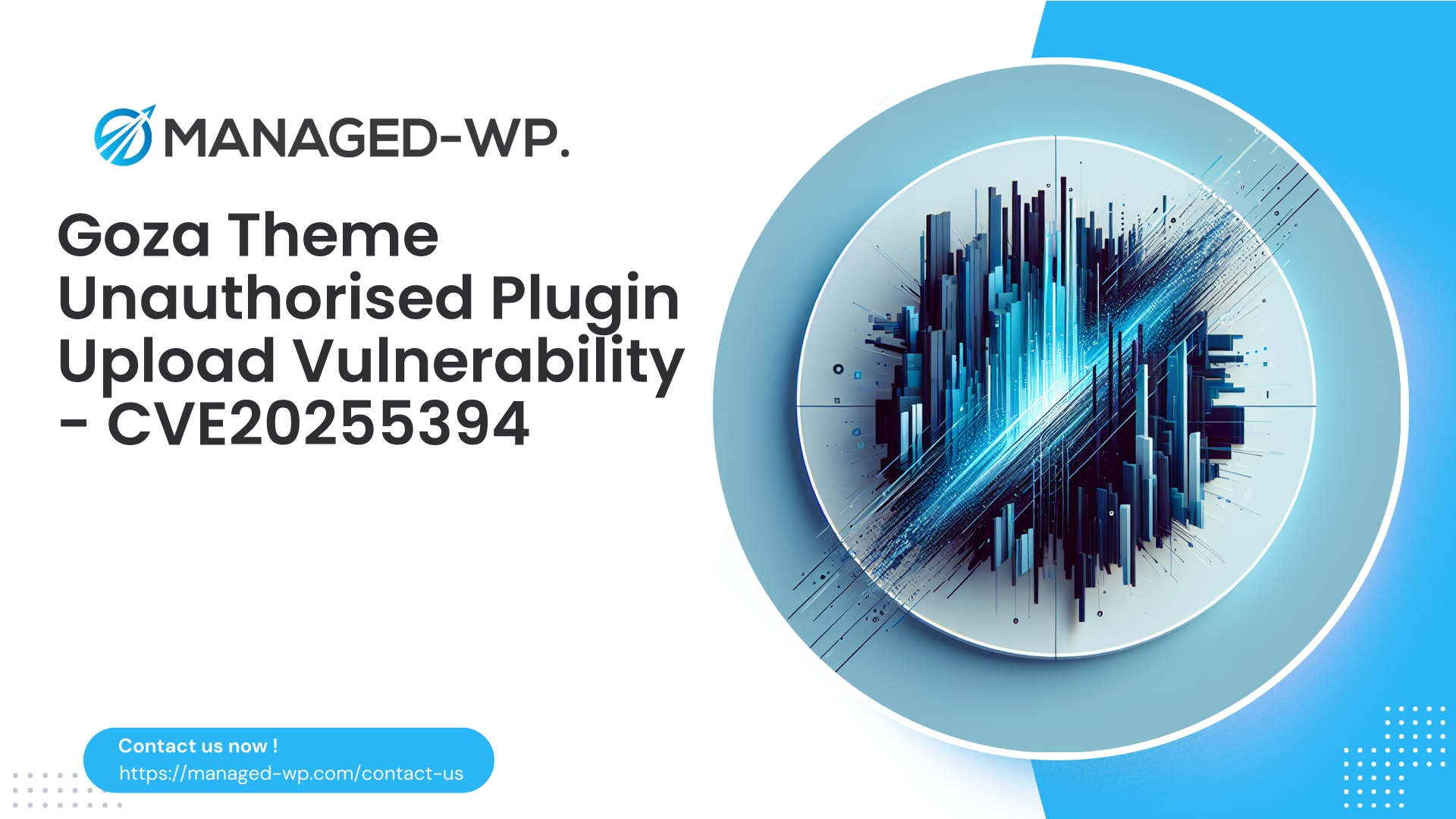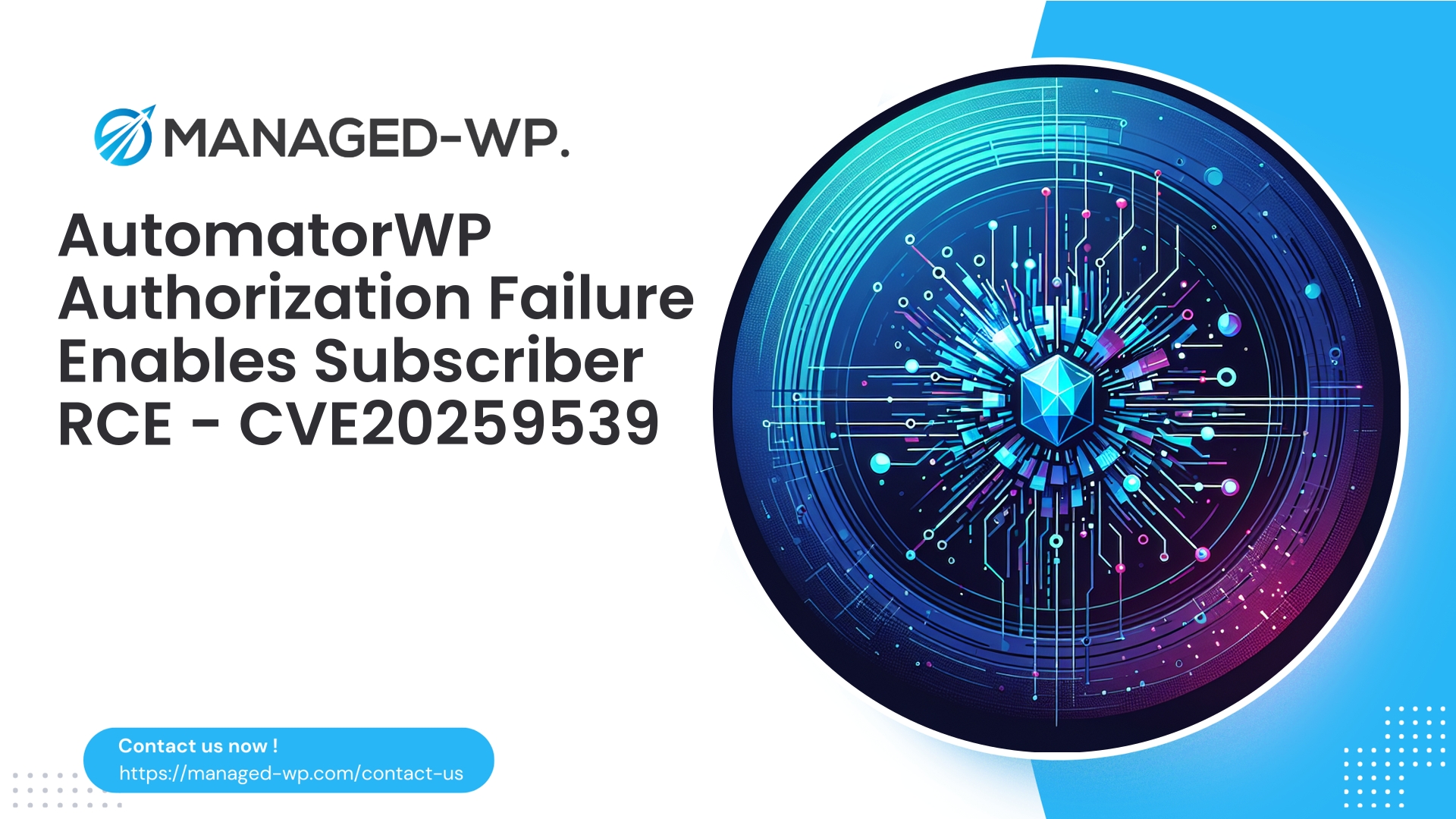| 插件名稱 | 醫生 |
|---|---|
| 漏洞類型 | 經過認證的任意文件上傳 |
| CVE編號 | CVE-2025-9112 |
| 緊急 | 高的 |
| CVE 發布日期 | 2025-09-08 |
| 來源網址 | CVE-2025-9112 |
緊急安全公告:Doccure主題(≤ 1.4.8)-已認證使用者可任意上傳文件(CVE-2025-9112)-需立即採取行動
Managed-WP 的專家安全團隊發現 Doccure WordPress 主題 1.4.8 及更早版本有一個嚴重漏洞 (CVE-2025-9112)。此漏洞允許已認證且擁有「訂閱者」角色的使用者在未經適當驗證的情況下上傳任意文件,從而構成直接且嚴重的安全風險。該漏洞的 CVSS 評分為 9.9,一旦被利用,攻擊者可能會遠端執行程式碼、接管網站並造成大規模攻擊。
Managed-WP 提供先進的託管式 Web 應用防火牆 (WAF) 和事件回應服務。我們發布這份詳細的安全指南,旨在幫助網站所有者、管理員、託管服務提供者和開發人員掌握快速回應所需的知識和工具。本指南闡述了漏洞的性質、相關風險、攻擊方法、偵測訊號、短期緩解策略、事件處理以及長期安全最佳實踐。
重要的: 截至本報告發佈時,尚無官方補丁可用。因此,必須迅速採取緩解措施,包括透過託管式網頁應用防火牆(WAF)進行虛擬修補,以降低風險。
網站營運人員執行摘要
- Doccure 主題包含一個上傳端點,該端點錯誤地授權訂閱者層級的使用者在沒有強大的伺服器端驗證的情況下上傳檔案。
- 利用此漏洞,攻擊者可以上傳惡意文件,例如 PHP webshell,從而實現遠端程式碼執行 (RCE) 和系統完全控制。
- CVE: CVE-2025-9112,於 2025 年 9 月 8 日公開揭露。
- 立即採取的措施:如果可行,停用或移除 Doccure 主題;否則,停用訂閱者的上傳功能,使用 WAF 阻止漏洞利用嘗試,停用上傳目錄中的 PHP 執行,並執行徹底掃描以偵測惡意檔案和後門。
- 如果無法立即移除主題,則透過精心配置的 WAF 規則進行虛擬修補至關重要。
技術細節和漏洞分析
Doccure主題的上傳功能旨在允許使用者上傳文件(通常是個人資料圖片或文件)。然而,它未能強制執行足夠的伺服器端驗證和功能檢查。因此,已認證的訂閱用戶可以繞過檔案副檔名和MIME類型的限制,直接將任意檔案上傳到可透過網路存取的目錄中。
上傳的檔案可能包含可執行的 PHP 程式碼或其他惡意負載。攻擊者可能:
- 部署一個偽裝成允許的檔案類型的 PHP webshell。
- 透過直接 URL 存取或其他網站功能遠端呼叫此 shell。
- 利用存取權限建立管理員帳戶、注入持久性後門、修改或竊取內容和數據,並轉向其他系統資源。
請注意,雖然訂閱者帳戶權限較低,但它們在許多 WordPress 網站上都很普遍,並且通常會被授予前端上傳權限。這種存在漏洞的上傳介面加上驗證不足,構成了一個高風險的攻擊途徑。
為什麼這個漏洞至關重要
- 訂閱者角色在會員入口網站、目錄、市場和其他互動式 WordPress 環境中都很常見。
- 文件上傳功能大大擴大了攻擊面——由於客戶端檢查很容易被繞過,因此伺服器端驗證至關重要。
- 任意文件上傳成功通常會導致遠端程式碼執行,這可以說是對網站完整性最嚴重的威脅。
- 概念驗證漏洞利用程式碼會加速自動化攻擊,迅速放大風險,直到部署緩解措施或修補程式。
攻擊流程概述(非漏洞利用型)
- 攻擊者註冊了一個使用者帳戶或攻破了一個現有帳戶。
- 他們發現了 Doccure 主題暴露出的易受攻擊的上傳端點。
- 提交一個精心建構的 HTTP POST 請求,其中包含偽裝成合法文件的惡意負載。
- 伺服器接受檔案並將其儲存在公共網路目錄中,而不驗證其內容。
- 攻擊者存取或觸發檔案的執行(例如,PHP webshell)以取得控制權。
這種經過身份驗證的攻擊途徑破壞了低權限使用者角色本身風險有限的假設,並大大加劇了威脅。
偵測與入侵指標 (IoC)
警惕剝削跡象,包括但不限於:
- 意外出現的 PHP 文件
wp-content/uploads主題資料夾或外掛目錄。 - 檔案修改時間戳與已知的部署或更新事件不符。
- 針對主題上傳端點的異常或大量 POST 請求,尤其是來自訂閱用戶的請求。
- 存取日誌異常,例如請求類似於圖像文件,但包含可疑的查詢字串或大型主體。
- 出現未經授權的管理員帳戶或異常密碼重設。
- 伺服器向未知目的地發出出站網路連接,表示存在命令與控制通訊。
- 資源使用量突然激增、網站反應速度下降或安全措施已停用。
建議用於調查的伺服器命令:
尋找 /path/to/wordpress/wp-content/uploads -type f -mtime -30 -iname "*.php" -print
grep -R --line-number "
尋找 /path/to/wordpress -type f -mtime -7 -ls
grep "POST" /var/log/nginx/access.log | grep "wp-content" | tail -n 200
mysql -u wp_user -p wp_db -e "SELECT option_name FROM wp_options WHERE option_name LIKE '%shell%' OR option_value LIKE '%base64%' LIMIT 50;"
請根據您的環境調整文件路徑和資料庫詳細資訊。
立即採取緩解措施(立即採取行動)
執行 Doccure 主題版本 ≤1.4.8 的網站必須緊急執行以下步驟,如果無法立即完成所有步驟,請按此順序優先執行:
- 將網站置於維護模式,以減少修復期間的攻擊面。
- 如果可以,請立即移除或停用 Doccure 主題。否則,請暫時切換到可信賴的預設 WordPress 主題。
- 透過將以下程式碼片段新增至必須使用的外掛程式中,或透過 WP CLI 或主題函數運行,停用訂閱者角色的檔案上傳權限:
// 停用訂閱者上傳檔案 add_action('init', function() { $role = get_role('subscriber'); if ($role && $role->has_cap('upload_files')) { $role->rem_cap-cap(cap()); - 阻止在上傳目錄內執行 PHP 程式碼:
對於 Apache,建立或更新
.htaccess在wp-content/uploads具體內容如下:# 停用上傳過程中的 PHP 執行命令拒絕,允許拒絕所有適用於現代 Apache 配置的 # 替代方案php_flag 引擎關閉# 限制對 .htaccess 本身的訪問命令允許,拒絕所有對於 Nginx,請將以下規則新增至伺服器區塊:
location ~* /wp-content/uploads/.*\.(php|phtml|php5)$ { return 403; }如果您無法直接控制網站伺服器配置,請聯絡您的主機提供者。
- 在官方修補程式發布之前,請使用您的 WAF 或 Web 伺服器設定來阻止對存在漏洞的主題上傳端點的 POST 請求。
- 執行全面的惡意軟體掃描,重點檢查文件完整性和特徵碼;隔離可疑文件,等待分析。
- 輪換所有敏感憑證:WordPress 管理員密碼、FTP/SFTP 金鑰、資料庫密碼和 API 令牌——尤其是在懷疑資訊外洩的情況下。
- 在清理之前,請建立文件和資料庫的完整備份,以保存取證證據。
透過託管 WP 安全服務進行虛擬補丁
Managed-WP 的託管防火牆和 WAF 解決方案透過以下方式提供即時保護:
- 部署高度針對性的 WAF 規則,以阻止與此問題相關的攻擊嘗試和易受攻擊的上傳端點。
- 檢查檔案上傳有效載荷,以偵測和阻止可執行內容,即使這些內容偽裝在允許的副檔名下。
- 過濾對已知惡意 URI 和禁止參數的請求。
- 對匿名帳戶和新帳戶採用速率限制和機器人防護措施,以減少濫用行為。
- 對新建立的檔案進行即時惡意軟體掃描,並隔離和發出警報。
- 在沒有官方廠商補丁的情況下,提供關鍵的虛擬補丁來保護網站。
為確保最大程度的保護,請確認您的 Managed-WP 服務已啟用並更新防火牆規則、檔案上傳掃描、惡意軟體偵測和即時警報機制。
如果您尚未利用 Managed-WP 的託管 WAF,我們強烈建議您立即啟用該功能,並同時採取手動緩解措施以實現分層防禦。
事件回應與清理指南(如遇設備受損)
如果任何入侵指標或掃描結果顯示系統已被入侵,請執行以下結構化的事件回應:
- 隔離: 暫時關閉網站或限制入站流量,以防止進一步損害。
- 保存: 對網站文件、資料庫和存取日誌進行安全完整備份,以便進行取證檢查。
- 鑑別: 進行徹底掃描和人工分析,以查找所有後門、webshell、惡意用戶、惡意定時任務和已更改的核心/主題/插件檔案。
- 根除: 刪除已識別的惡意檔案和殘留檔案。從可信任備份中還原乾淨版本。
- 資格認證輪替: 變更所有與 WordPress 管理員、資料庫存取、FTP/SFTP 和 API 相關的憑證。
- 重建: 如果無法確定洩漏的程度,請在全新的 WordPress 安裝上重建,並僅匯入已清理的內容。
- 確認: 進行後續掃描,確認沒有殘留惡意元件。檢查計劃任務是否存在持久化機制。
- 事後分析: 確定根本原因並採取本建議中詳述的預防措施。
對於複雜案件,應聘請具備取證和補救專業知識的專業事件回應團隊。
長期安全建議和最佳實踐
預防至關重要。 Managed-WP 建議採取以下措施來維持強大的安全態勢:
致網站所有者和管理員:
- 保持主題、外掛程式和 WordPress 核心程式碼更新至最新版本。訂閱官方供應商的安全更新和警報。
- 移除未使用的或過時的外掛程式和主題,以縮小攻擊面。
- 遵循最小權限原則-除非絕對必要,否則避免授予低階使用者上傳權限。
- 利用託管式Web應用防火牆解決方案過濾已知和新興威脅。
- 實施頻繁的文件完整性監控和自動化惡意軟體掃描。
- 對所有管理角色強制執行強密碼原則和多因素身份驗證。
致開發者與主題作者:
- 強制執行伺服器端檔案類型和 MIME 內容的白名單驗證。
- 對上傳的檔案進行內容檢查,禁止嵌入 PHP 或其他腳本語言。
- 將上傳的檔案儲存在網站根目錄之外,或透過經過驗證的處理程序進行代理存取。
- 移除上傳目錄的執行權限。
- 使用 WordPress API 嚴格驗證使用者功能(
當前使用者可以())以及使用 nonce 的 CSRF 保護。 - 對檔案名稱進行清理和規範化;去除危險字元並強制執行大小限制。
- 記錄上傳操作,包括使用者 ID 和時間戳,以便進行稽核和異常檢測。
- 將安全測試整合到 CI/CD 管道中,涵蓋上傳和存取方面的陷阱。
開發人員安全文件上傳處理檢查清單
- 使用以下方式驗證使用者能力
current_user_can('upload_files'). - 驗證所有資料修改 POST 請求的 nonce 值。
- 將檔案名稱清理:禁止嵌入 PHP 程式碼,限製檔案名稱長度,僅允許使用安全字元。
- 請檢查 MIME 類型與實際文件內容是否一致。
- 將檔案儲存在網站根目錄之外,或透過經過驗證的處理程序提供檔案。
- 確保上傳目錄不允許程式碼執行。
- 維護檔案副檔名的允許清單和封鎖清單。
- 限制上傳端點的速率以防止濫用。
- 對出現異常模式的上傳檔案實施日誌記錄和警報機制。
常見問題 (FAQ)
Q:訂閱者角色通常有上傳權限嗎?
答:預設情況下,WordPress 訂閱者不擁有 上傳文件 具備這種能力。然而,某些主題或外掛程式可能會授予此權限以方便前端上傳,這凸顯了嚴格伺服器端驗證的必要性。
Q:WAF 會影響網站的正常功能嗎?
答:正確配置後,WAF 可以在不中斷正常操作的情況下提供保護。使用允許清單策略,並在強制執行新規則之前,在偵測模式下進行測試,尤其對於自訂上傳端點。
Q:如果我無法立即移除存在漏洞的主題怎麼辦?
答:至少要停用訂閱者的上傳功能,透過 WAF 阻止漏洞利用端點,阻止在上傳目錄中執行 PHP,並安排徹底的稽核和清理。
Q:如何驗證我的網站是否有漏洞?
答:請驗證您的 Doccure 主題版本(≤1.4.8)。檢查訂閱者帳號是否具有上傳檔案權限,並審核主題的上傳端點是否有安全控制措施。
Q:僅僅更改檔案權限就能阻止攻擊嗎?
答:停用上傳過程中的 PHP 執行有助於降低風險,但無法清除惡意檔案或封鎖其他攻擊路徑。應結合檔案權限強化、Web 應用防火牆 (WAF) 規則、憑證輪替和全面的安全應變措施。
概念性範例 WAF 規則(可根據您的環境進行自訂)
以下是一些強大的網路應用防火牆(WAF)應強制執行的規則類型範例,用於阻止此類上傳攻擊。請根據您的網站實際情況進行調整併進行全面測試。
- 阻止包含帶有 PHP 開始標籤(“
<?php”)。 - 阻止對主題目錄的寫入或
wp-content/uploads當流量來自低權限或未經身份驗證的使用者。 - 封鎖具有可疑副檔名或多種副檔名規避模式的檔案(例如,
file.jpg.php). - 對新用戶或匿名用戶的上傳嘗試次數實施速率限制。
Managed-WP 的安全團隊會根據您的主題和託管環境,精心製作自訂規則集和虛擬補丁。
最終建議-立即採取行動,最大限度降低風險
高風險、經認證的任意文件上傳漏洞對 WordPress 網站構成最災難性的風險之一。由於受影響的 Doccure 版本目前沒有可用的補丁,因此採用多層防禦策略至關重要:停用易受攻擊的程式碼路徑、部署託管防火牆規則、阻止上傳過程中的 PHP 執行,並進行徹底的清理。
如果您對處理這些操作缺乏信心或需要驗證方面的協助,請尋求專業的事件回應服務,以確保您網站的完整性並防止將來再次感染。
立即使用 Managed-WP 基本保護(免費)保護您的 WordPress 網站
立即獲得安全保障並不總是需要大量投資。 Managed-WP 的基礎(免費)計畫提供必要的保護,可大幅降低 CVE-2025-9112 等漏洞帶來的風險,同時您也可以實施修復措施:
- 託管防火牆,頻寬無限制
- Web應用程式防火牆(WAF)能夠阻止OWASP十大攻擊向量
- 整合惡意軟體掃描和檢測
立即開始使用 Managed-WP Basic,透過經過驗證的託管防火牆和針對已知攻擊手段的持續 WAF 規則覆蓋來保護您的網站。
立即啟動 Managed-WP Basic(免費)
https://my.wp-firewall.com/buy/wp-firewall-free-plan/
Managed-WP 提供專家諮詢服務,針對您的主題、外掛程式集和託管環境,制定量身訂製、優先順序明確的安全行動方案。 WordPress 安全性依賴多層控制、快速回應和持續監控——迅速行動是抵禦攻擊的最佳防線。













